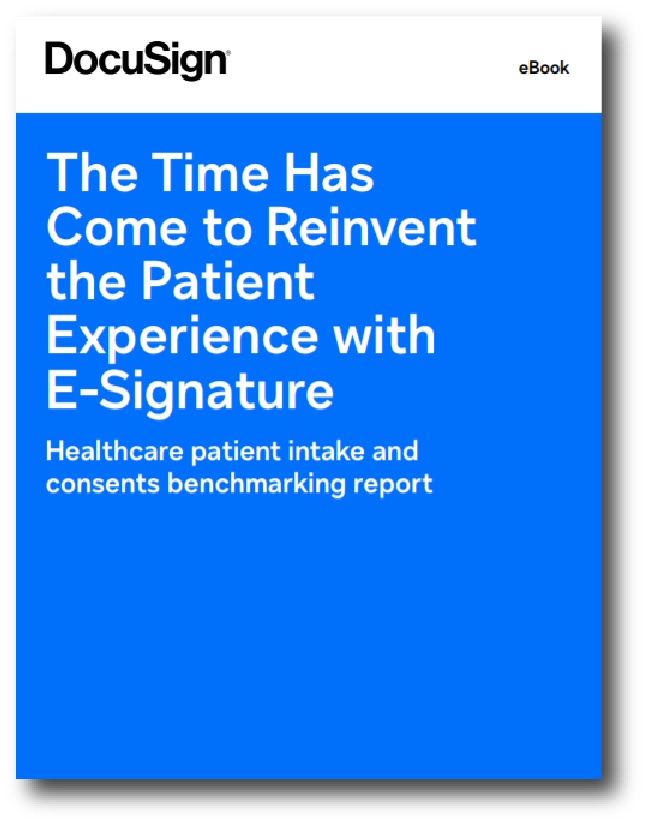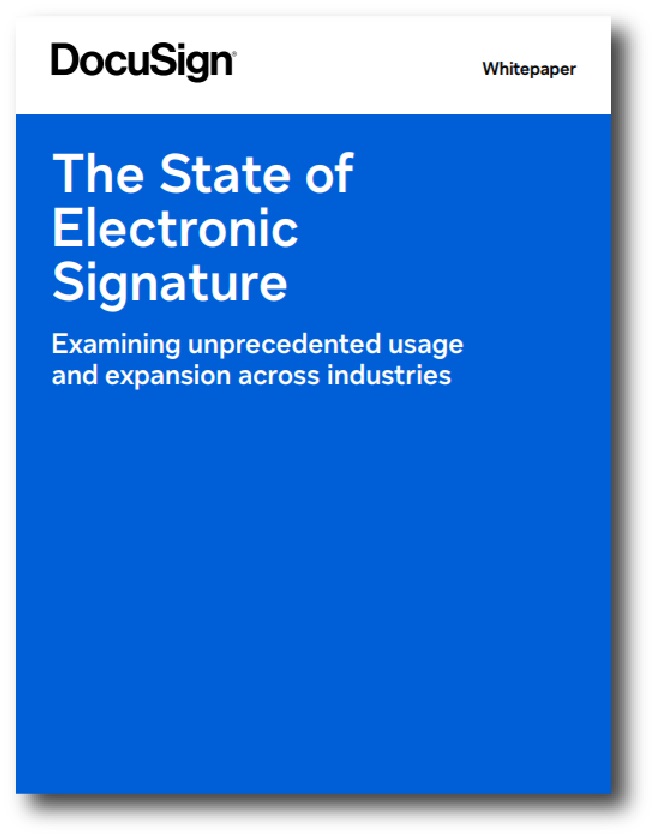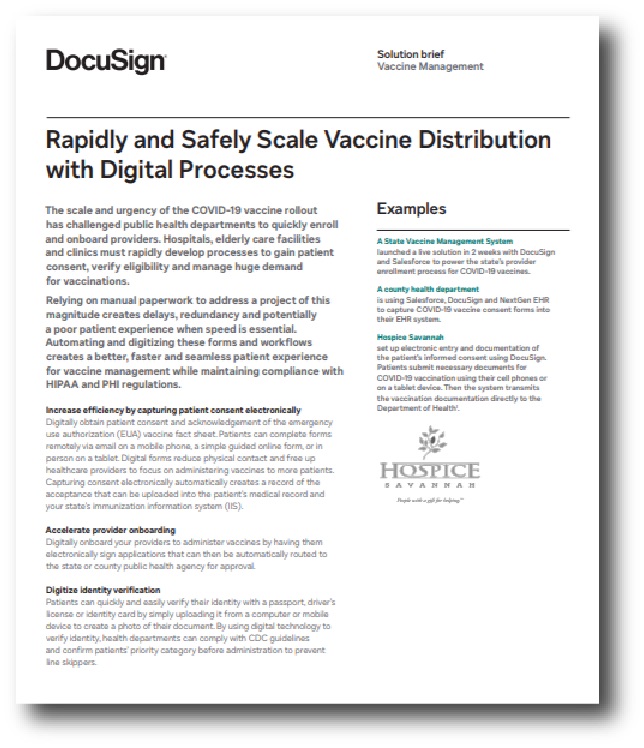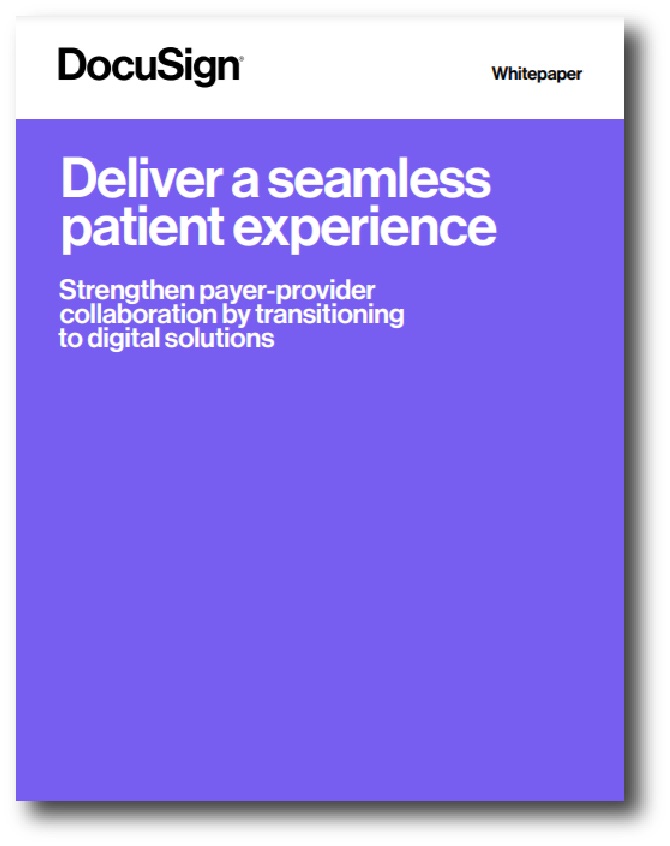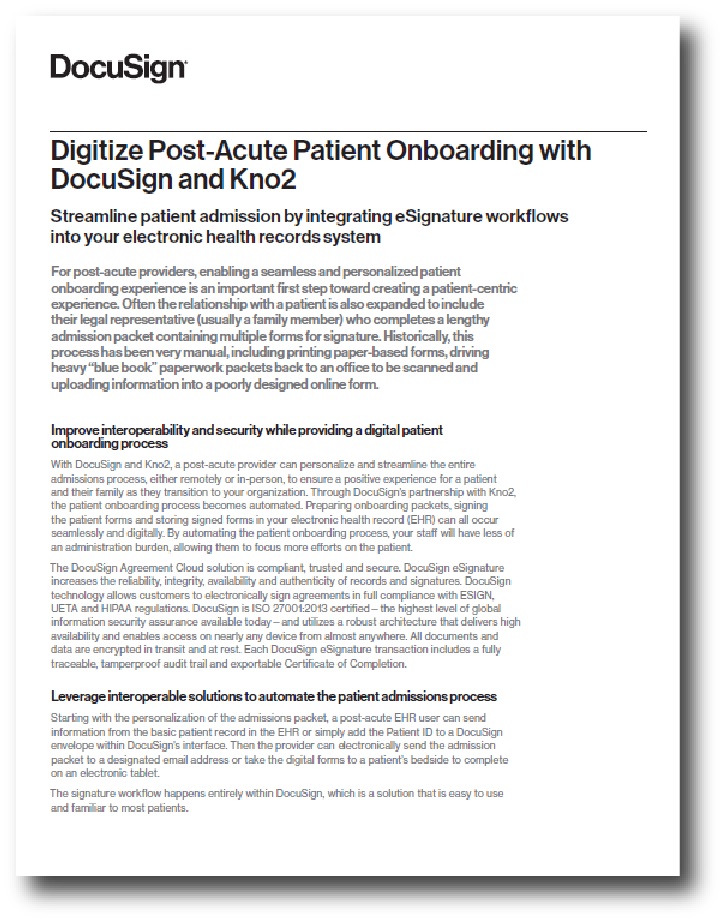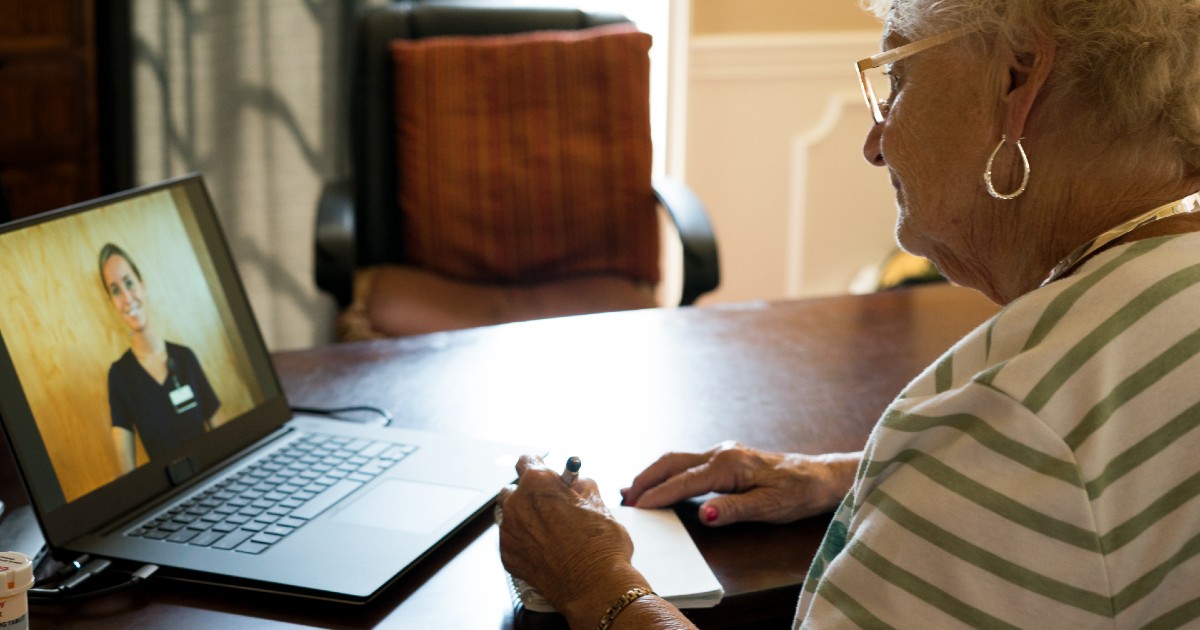Cloud Computing
The COVID-19 pandemic and the resulting migration to remote services have ramped up the pressure on healthcare organizations to retain existing patients and attract new ones, as well as to reduce the burden of manual paperwork on clinicians. DocuSign has conducted research on the challenges, opportunities and costs involved in streamlining the intake and consent processes. Adopting e-signature is a major step towards reimagining the patient, clinician and staff experience.
The COVID-19 pandemic accelerated digital transformation across every industry, including healthcare. As more organizations adapt to a remote work environment, they are replacing time- and labor-intensive manual processes, particularly agreement processes, with modern digital solutions that can be effectively used by anyone, anywhere. DocuSign has studied how business leaders are using e-signature technology and other digital tools to meet new challenges.
As healthcare and life science organizations invest in digital technology, they may be overlooking one critical area: patient documentation. When patients fill out paper forms that then must be manually input by staff, this can cause delays and introduce errors into the data. DocuSign’s paperless eSignature solutions for patient onboarding can streamline critical healthcare and life science processes for a significant savings of time and money.
Healthcare organizations need to be nimble and efficient to recruit the best talent in today’s competitive market. Upgrading to a fully digital staffing process can make the recruiting and onboarding process more efficient, reduce search time and costs and delight candidates.
The COVID-19 vaccine rollout has presented significant challenges to public health departments to enroll and onboard providers. In turn, local healthcare facilities needed to develop processes to manage and distribute vaccines. Automating and digitizing forms and workflows for obtaining patient consent, verifying eligibility and managing vaccine records creates a faster, safer and more efficient patient experience that maintains compliance with HIPAA and PHI regulations.
SPONSORED
The Centers for Medicare and Medicaid Services have announced their initiative to turn healthcare offices into “fax-free zones” in favor of automated systems. Both payers and providers spend large amounts of time reviewing prior authorization paperwork and communicating via phone, fax and snail mail, which can cause significant delays in patient treatment. By digitizing their systems of agreement, payers and providers can dramatically reduce their cost structure, as well as lower the risk of errors and treatment delays so patients get the care they need when they need it.
SPONSORED
The digital transformation of healthcare includes a trend toward “data-driven” healthcare. But what does that mean for your practice and your patients? To become truly data-driven, your organization will need to overhaul and digitize outmoded paperwork-based operations. Although digitization may seem like a large and complex project, it’s a necessary step to establishing a source of verifiable, trustworthy data that can help streamline internal management, improve the patient experience and potentially save patients’ lives.
The typical patient admission process for post-acute providers usually involves transporting paper-based forms, filled out and signed by patients or family members, to a provider’s office to be scanned and uploaded online. However, post-acute providers can provide a more positive patient admissions experience by leveraging the power of the DocuSign Agreement Cloud. In partnership with Kno2, DocuSign provides automated onboarding with documents that can be filled out and signed digitally, then seamlessly integrated into the patient’s EHR.
Delivering virtual care via community broadband offers big financial and quality-of-life benefits, says our contributing writer, opening avenues to both digital equity and health equity.
In the COVID-19 era, health systems recognize that existing data infrastructure is inadequate. Here are three things large datasets need to be useful.
